E-Museum of Pyrographic ArtAntique Art Hall
|
| - Café Flambé - | - Portraits and Paintings - | - Decorative and Applied Art - |
| - Folk and Traditional Art - | - Antique Art - | - Special Hall - | - Sculpture - |
| - Children's Hall - | - Bookstore and Library - | - Tools and Techniques - |
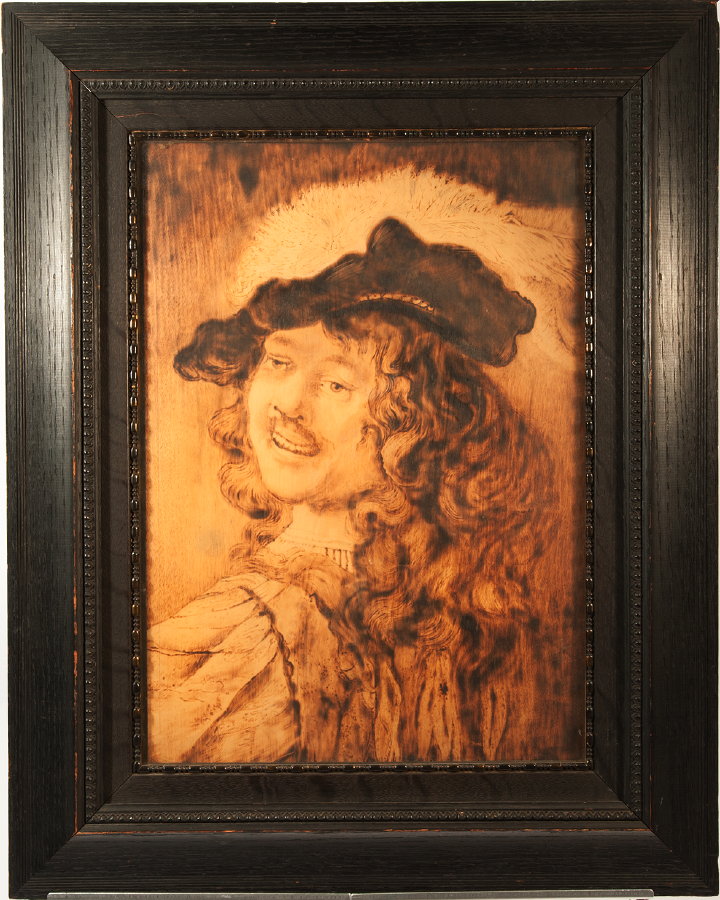 |
| Portrait Detail after Rembrandt's "The Prodigal Son in the Tavern" By Norman W. Kingsley, June 1901 Pyrography on wood panel, 12 in. wide by 17 in. tall (30.2 cm. by 43.2 cm.) in its original Arts and Crafts frame, measuring 18-7/8 in. by 23-5/8 in. After Rembrandt's painting of "The Prodigal Son in the Tavern" Image courtesy of S. Peck |
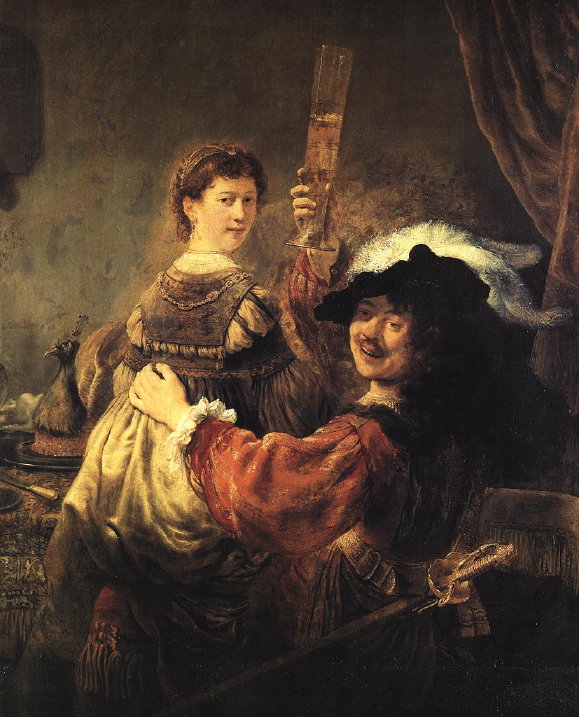 |
| The Prodigal Son in the Tavern
By Rembrandt van Rijn, 1635 Oil on canvas Image courtesy of S. Peck |
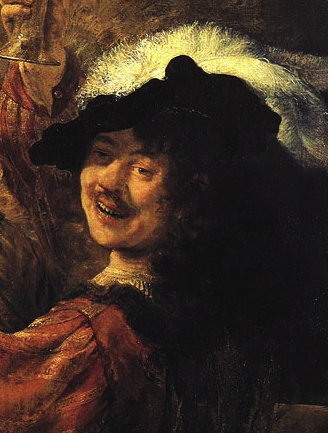 |
| Portrait Detail from Rembrandt's "The Prodigal Son in the Tavern" By Rembrandt van Rijn, 1635 Image courtesy of S. Peck |
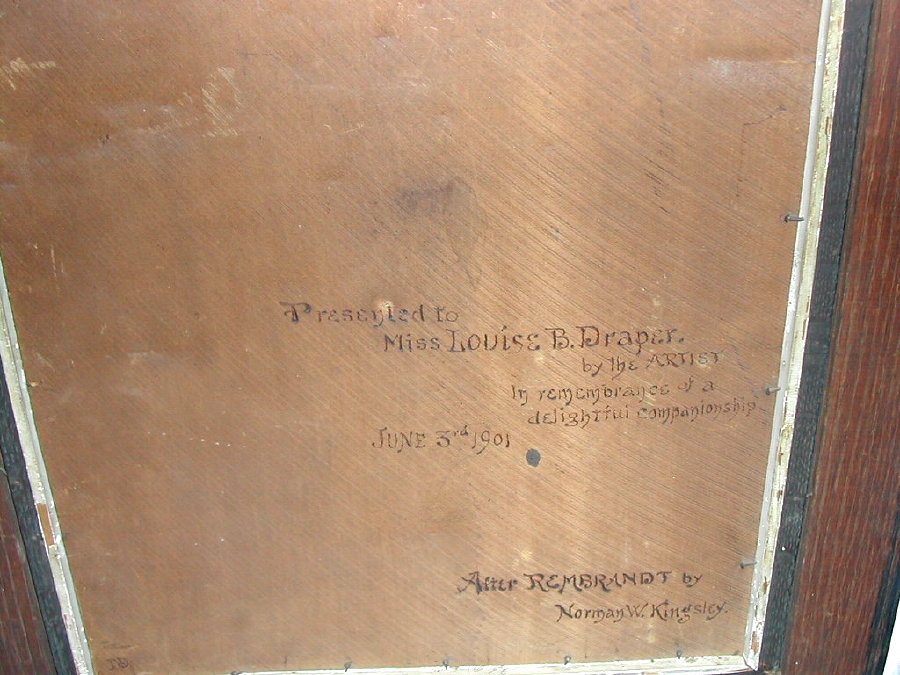 |
| Portrait Detail after Rembrandt's "The Prodigal Son in the Tavern" partial view, verso, showing dedication and signature By Norman W. Kingsley, June 3rd, 1901 Pyrography on framed wood panel, inscribed verso, as follows: "Presented to Image courtesy of S. Peck |
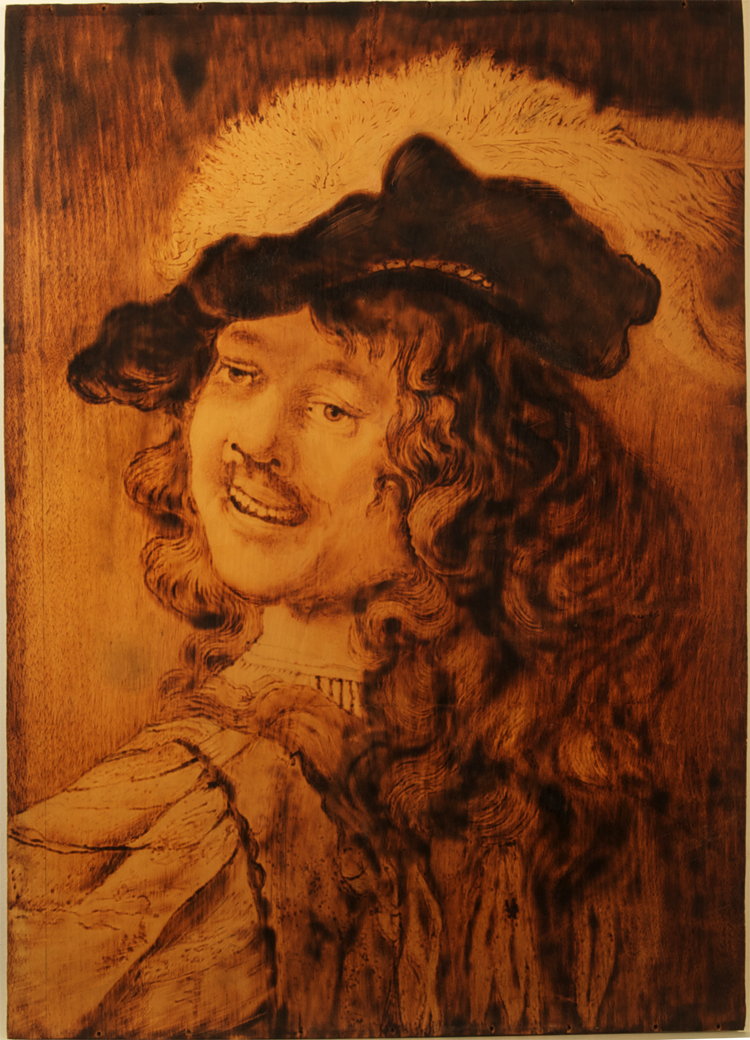 |
| Portrait Detail after Rembrandt's "The Prodigal Son in the Tavern" By Norman W. Kingsley, June 1901 Pyrography on wood panel, 12 in. wide by 17 in. tall After the 1635painting of Rembrandt's "The Prodigal Son in the Tavern" Image courtesy of S. Peck |
American collector Dr. Sheldon Peck in Massachusetts, acquired the flamboyant portrait (above)
by Dr. Norman W. Kingsley (1829–1913) that is after a detail from Rembrandt's painting "The Prodigal Son
in the Tavern." Rembrandt himself, we are told, often used himself as a model in his paintings,
even when not intended as self-portraits per se, and this work is no exception. However—in
addition to himself—it is said that the model for the female subject in his Prodigal Son painting
was his wife Saskia. The ostensibly 'fun-loving' Prodigal Son here was not intended to represent
the Biblical character but a parallel 17th Century Prodigal Son dressed in the fashion of
Rembrandt van Rijn's own time.
Because Kingsley was such an acclaimed dentist—known in his profession as the Father of Modern Orthodontics—it is amusing in comparing his pyrographic work with Rembrandt's painting
to observe that he could not resist fixing the teeth of his Prodigal Son, while Rembrandt's own teeth
were not quite so good.
Visit the 1909 Norman W. Kingsley Salon here in the E-Museum for the story of Norman Kingsley's
fascinating life and myriad accomplishments. The pyrographic part begins on page 555. Note that
his Prodigal Son detail portrait is shown there in the lower left corner of page 558.
Because he is an art enthusiast and antiques collector, and because he is also an orthodontist,
Sheldon Peck has become very interested in studying Norman Kingsley
and acquiring his
pyrographic works. In addition to the 1901 work here, he also owns the 1899 work
exhibited here in the E-Museum.
If you have either any questions or any information regarding the artist or this turn-of-the-century
pyrographic portrait or others by this artist, please e-mail Dr. Sheldon Peck and the E-Museum Curator.
You are leaving the Norman W. Kingsley 1901 Salon.
You can return to the
Antique Hall
or visit one of the following:
Pyrographic Art Exhibit Halls:
Decorative and Applied Art
Sculpture
Traditional and Folk Art
Portraits and Paintings
Children's Pyrographic Art
Special Pyrographic Art
The Book Store and E-Museum Library
Pyrography Tools and Techniques
Your questions and comments are welcome and appreciated.
Please e-mail Curator
Back to E-Museum Entrance homepage
© 2015 Kathleen M. Garvey Menéndez, all rights reserved.
14–17 October 2015.

